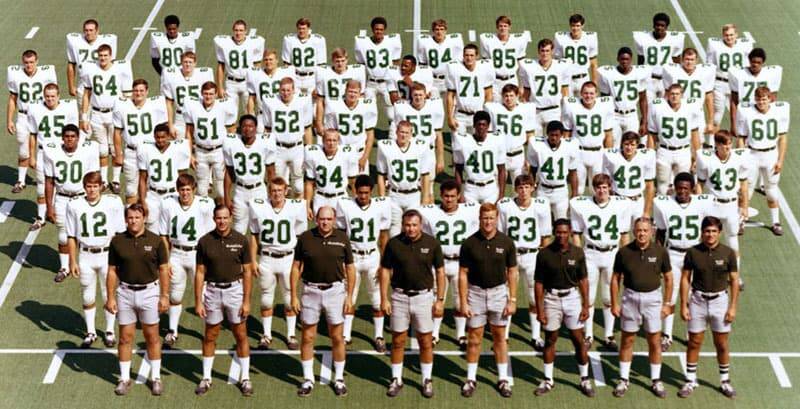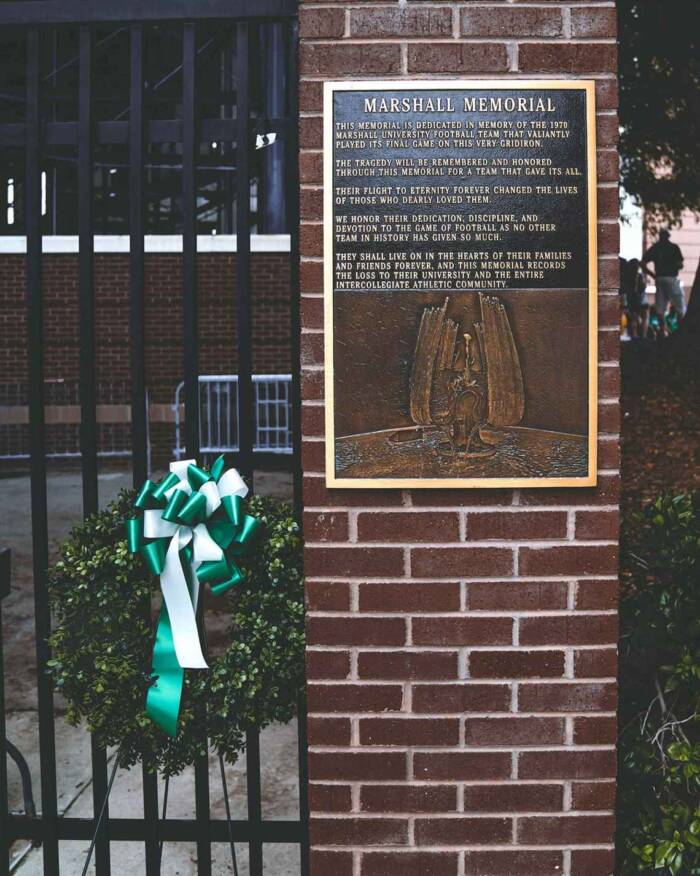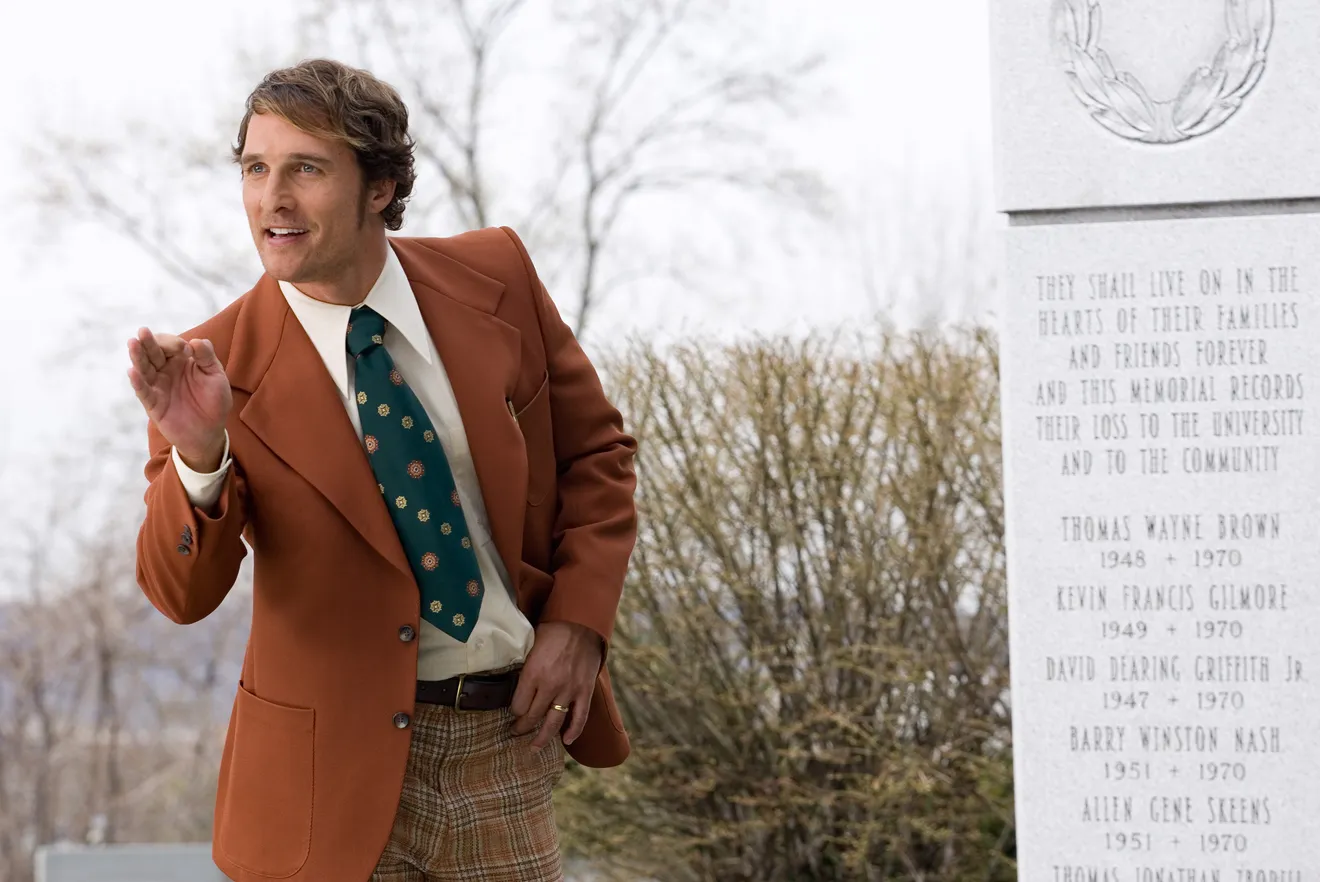In November 1970, a plane crash killed most of the Marshall football team, the aftermath of which inspired the 2006 film We Are Marshall.

Marshall University Special CollectionsNearly all of the members of the 1970 Marshall University football team and coaching staff died in a plane crash while traveling home from a game at East Carolina University.
On a foggy autumn night in 1970, the Marshall University Thundering Herd football team was reeling from a nail-biting 17-14 loss against the East Carolina University Pirates. When players, coaching staff, and athletic boosters boarded a small Southern Airways plane to travel back to Huntington, West Virginia, spirits were low.
“We should have won the damn game,” Red Dawson, part of the coaching staff for the Marshall team, later told ESPN. “That’s what everybody was thinking.”
But that loss is now the last thing anyone remembers about that night.
On Nov. 14, 1970, the Marshall team’s plane crashed nose-first into a hillside just one mile from the Huntington Tri-State Airport, setting the whole area ablaze.
All 75 people on board were killed in what the National Transportation Safety Board (NTSB) called an “unsurvivable” crash. To this day, many still consider the accident “the worst sports-related air tragedy in U.S. history.”
The Marshall plane crash would later inspire the 2006 Matthew McConaughey film We Are Marshall, which explored how Marshall University recovered following the sudden loss of so many beloved community members. But the true story of We Are Marshall is more tragic than anything in the film.
Inside The Conditions Causing The Marshall Plane Crash
Visibility was low that night as the plane attempted to make its descent.
“I thought the visibility was remarkably good when I [made my report], but about 10 or 15 minutes after that the fog formed very rapidly, and that’s when the visibility came down,” An NTSB official who surveyed the conditions said in the crash report. “It was right over the field. It just seemed like it formed very rapidly and it just actually sank right over the whole field.”
This low visibility certainly contributed to the crash; the pilots likely couldn’t see the lights of the airport and runway, and the plane plummeted hundreds of feet past the minimum altitude it needed to start its descent. The fog may have also caused the plane to make incorrect height readings, leading the pilots to believe they were higher up than they actually were.
“The probable cause of this accident was the descent below Minimum Descent Altitude during a nonprecision approach under adverse operating conditions, without visual contact with the runway environment,” the NTSB report stated. “The Board has been unable to determine the reason for this [greater] descent, although the two most likely explanations are (a) improper use of cockpit instrumentation data, or (b) an altimetry system error.”
The plane skimmed trees as it went down before crashing just about a mile from the runway, bursting into flames on impact and killing all 75 people on board.
Ironically, the team had almost canceled their flight, thinking it might be safer to drive back home instead — but decided to charter the larger, “safer” Southern Airways DC-9 at the last minute.

West Virginia State ArchivesAll 75 people onboard the Southern Airlines flight from Kinston, North Carolina, to Huntington, West Virginia died in the crash.
What Happened After The Marshall Plane Crash
Word spread quickly about the Marshall plane crash, as a small crowd had gathered to watch the plane land and welcome the team home. A local reporter showed up at the scene to find the wrecked plane ablaze.
“The fuselage was still burning, but you could see the ‘E-R-N’ on the end of it,” said Jack Hardin, the Huntington Herald-Dispatch reporter who first responded, according to Rivals. “One of the firefighters — a friend of mine — said… ‘Jack, the Marshall team was coming in on a Southern plane.’ I thought, ‘Oh my God.'”
The few members of the team who, for various reasons, didn’t fly home on that fateful Southern Airways Flight 932, suffered from immense survivor’s guilt, not fully comprehending what had happened.
“Shock, total shock,” said Red Dawson, a Marshall football coaching staff member who had given up his seat on the flight to drive to another local college for recruitment efforts. “I don’t know where we were or even what time it was. I just know we stopped the car and sat there and stared at each other. Neither one of us could say a word. We just stared. I couldn’t tell you how long. It seemed like forever.”
🏈On November 14, 1970 Marshall University’s football team suffers one of America's greatest sports tragedies. Returning to Huntington, West Virginia, after a 17-14 loss to East Carolina, the Thundering Herd’s charter crashes on its approach to the runway at the Tri-State Airport in the Appalachian Mountains. All 75 aboard, including 70 passengers, are killed. Among the dead are 37 players and 5 coaches, with boosters making up the majority of the remaining passengers. Eyewitnesses report the DC-9 struck the top of a hill, skidded down into a valley and exploded. A memorial service commemorating the disaster will be held every year at Marshall. Take a look back to the report on the the crash the following day on the CBS Evening News.🏈
Posted by Davenport Sports Network on Sunday, November 14, 2021
Nate Ruffin, a co-captain of the 1970 Marshall team, hadn’t even made the trip to East Carolina due to an injury. He had the horrific job of calling his teammates’ families to tell them what happened.
“Why them? Why not me? It makes no sense but you tell yourself: I should have been on that plane,” Ruffin said in an interview with Mississippi Today.
Members of the East Carolina (ECU) football team that had defeated the Marshall team just hours earlier also experienced shock upon hearing the news.
“A lot of us were downtown trying to find a beer like most college kids. We were celebrating. We didn’t win many games that season,” said Richard Peeler, a player for the 1970 ECU team, in an interview with ESPN in early 2023. “When [ECU] Coach McGee finally got us all together that night, we went to pieces.”
“The Whole Town Was Aboard”
While the Marshall plane crash is often referred to as “the worst sports-related air tragedy in U.S. history,” it was an immense personal tragedy for the close-knit community of Huntington. Seventy children lost a parent in the crash, and 18 children were orphaned altogether.
Along with players and coaching staff, several prominent boosters and citizens of Huntington died in the accident, including a state legislator, a city councilman, and a few local physicians. Family members showed up in droves to the local hospital, praying that there would be some semblance of good news. But there was none.
“I didn’t think I would ever get these four words out of my mind,” said Mary Plyde Ward Bell, whose husband was a Marshall booster onboard the plane. “[Our minister] said, ‘I need for you to just look at me and think about what I’m saying. There are no survivors.'”
“The whole fabric, the whole heart of the town was aboard,” said a citizen of Huntington, according to the History Channel.
A mass memorial was held at the team’s field house, and many of the victims were buried in a cemetery on a hill overlooking Marshall University. Six of the victims’ bodies were never identified.
“I think I went to 27 funerals,” Dawson said. “You can’t imagine that kind of pain, seeing all those families who lost the people they love the most.”

East Carolina University AthleticsA memorial at the East Carolina University campus reads in part, “Their flight to eternity forever changed the lives of those who dearly loved them…. They shall live on in the hearts of their families and friends forever.”
Memorials for those who lost their lives in the Marshall plane crash were established at both the Marshall and East Carolina campuses, and the street between the Marshall football stadium and the cemetery where many of the dead were buried was renamed Marshall Memorial Boulevard.
Remembering The 1970 Marshall Team 50 Years Later
In the wake of the Marshall University plane crash, the university considered canceling its football program altogether, torn as to how to proceed after losing most of its team and coaching staff.
Instead, as dramatized in the 2006 film We Are Marshall, Jack Lengyel, played by Matthew McConaughey, was brought on as the new head coach and took up the daunting task of rebuilding the team. In the end, he helped to lead the Thundering Herd to its first victory since the crash.

FRANK MASI/WARNER BROS. PICTURES
The True Story Of We Are Marshall is even more heartbreaking than anything in the film.
The Thundering Herd is going strong today. In September 2023, at a football game between Marshall and East Carolina, the teams held a memorial ceremony commemorating the 50-year anniversary of the Marshall plane crash. The event had originally been planned for 2020, the actual 50-year anniversary, but was rescheduled due to the COVID-19 pandemic.
More than 30 of the players from the 1970 East Carolina team returned to their home stadium for the memorial game.
“I’m still not over it, not sure I ever will get over it,” said George Whitley, a senior co-captain on the 1970 East Carolina team. “I think I’ve been back here for a game maybe one other time, but I wasn’t going to miss this one.”
Former Marshall coach Red Dawson also made the trip for the game. It was the first time Dawson had been back to the East Carolina campus since that fateful night in 1970.
“It was hard coming back here. I didn’t know if I ever could,” Dawson said. He had quit coaching about a year after the crash.
During a time out in the first quarter, players from the 1970 East Carolina team presented a football they had all signed to Dawson and Keith Morehouse, the son of Marshall announcer and sports information director Gene Morehouse, who died in the crash.
Marshall University ended up winning the game 31-13, thanks in large part to a 75-yard touchdown reception — a fortuitous tribute to the 75 who lost their lives that cold November night over 50 years ago.
After reading about the true story of “We Are Marshall,” read about the plane crash that killed Buddy Holly on “the day the music died.” Or, read about the chilling story behind the Lockerbie bombing that killed all 259 people onboard Pan Am Flight 103.






